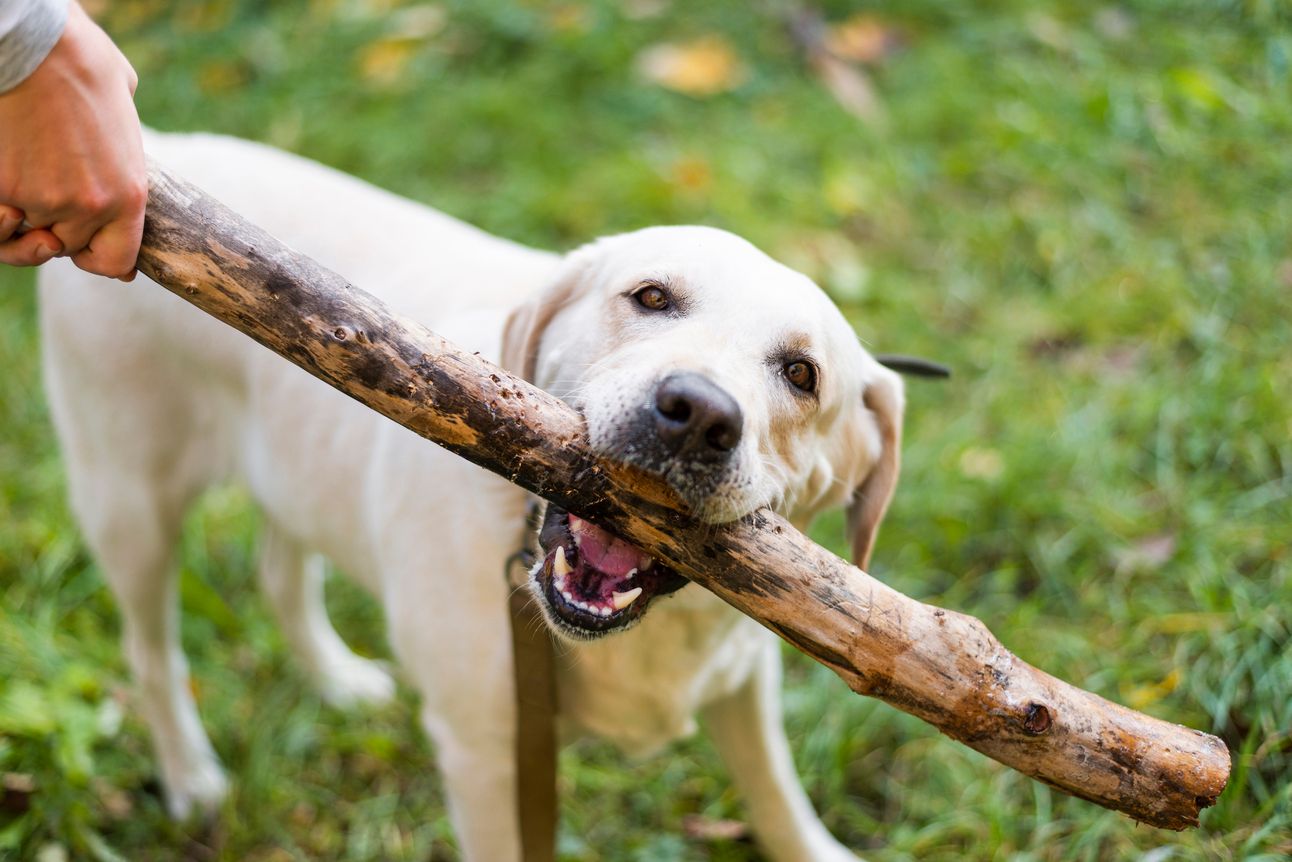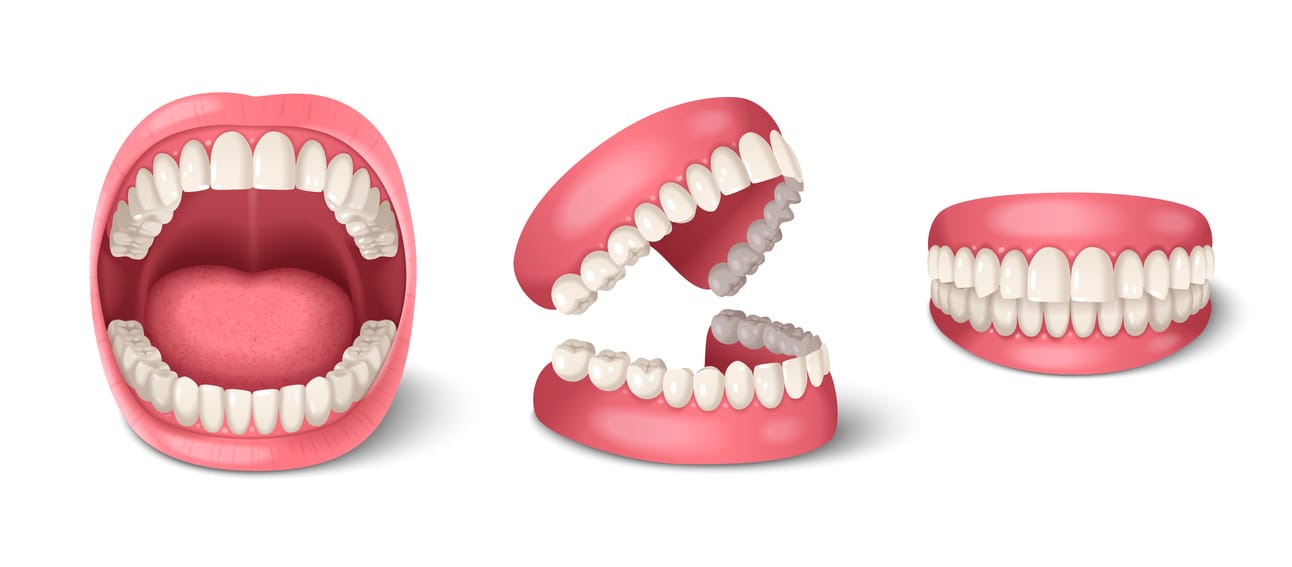

Dogs chew sticks - maybe people should too? image credit: freepik
In a recent study, a team of Korean researchers discovered that chewing on a piece of wood boosts memory and increases levels of a healthy brain antioxidant.
Wait, what?
This study—published in the journal Frontiers in Systems Neuroscience—invites us to consider new ways of protecting cognition in the aging brain; and you may not necessarily need to chew wood to reap the benefits.
Let’s get chewing.
Chewing does more than break down food

image credit: freepik
👄 You might have heard that digestion begins in the mouth.
That’s because chewing stimulates the release of enzymes that break down food to extract its nutrients; it’s one of the reasons experts recommend chewing each bite of food at least 32 times.
This is just the tip of the iceberg though.
The act of chewing has other survival and health benefits, including its role in stimulating blood flow, which helps deliver oxygen and nutrients to the brain, according to an article published in PsyPost.
🧠 Chewing gum could increase blood flow to the brain by 40%, according on research presented by the Parkinson’s Resource Organization.
It may be easier to see why this is so important when you consider the opposite; the author cites other studies which demonstrate how chewing difficulties are linked to worse cognition.
Other papers—like this one published in BMC Geriatrics—mention a link between missing teeth and risk of dementia. 🦷
Moreso, there are neural circuits that connect our masticatory (chewing-related) organs with the parts of the brain associated with memory and learning (hippocampus).
A new brain-body connection?
It looks like the brain-masticatory connection could be added to the growing list of brain-body connections—alongside the gut-brain and heart-brain connections.
Chewing on wood changes brain chemistry

The study explores the neurological effects of chewing on materials with different levels of hardness.
Specifically, researchers compared the effects of chewing wood versus gum on the brain.
Researchers had two major goals:
To explore how chewing on materials of varied hardness impacts glutathione levels in the brain.
To determine whether glutathione levels affect cognitive function.
For five minutes, participants either chewed on a wooden tongue depressor or a piece of paraffin wax gum. Every 30 seconds, participants in both groups switched between chewing on the left/right side of the mouth.
They measured changes in glutathione levels in the brain’s anterior cingulate cortex (a brain region is associated with cognitive and thinking processes) before and after chewing, using a technology called Magnetic Resonance Spectroscopy.
Participants also completed a cognitive test before/after chewing, which would help calculate changes in thinking and memory. Here’s what they found.
Increased Glutathione Levels
Chewing on wood* led to a significant increase in the critical brain antioxidant—chewing on gum did NOT.
Improved Memory
Chewing wood was also linked to better brain function. Participants in the wood group performed better in different memory tasks compared with those in the gum group.
And to a greater extent, those with larger increases in glutathione levels had better performance on memory tasks, PsyPost explains.
“In essence, chewing wood seemed to both increase brain antioxidant levels and improve certain aspects of memory, and these two changes appeared to be connected,” according to the article.
*The practice of chewing on wood is called lignophagia, in case you were curious—
⌛ Only two weeks until the most exciting event in longevity is here!
On March 28-29, the top longevity experts and 200 wellness-driven peers will gather at beautiful Palm Beach Island to explore the latest breakthroughs in longevity. Part actionable strategies and part wellness retreat, this is an investment in your health and future. Only a few tickets remain—don’t miss your chance to join us for this intimate event.
As a big ‘Thank you!’ for being a weekly Livelong reader, we’re offering a special discount. Use the code ‘LIVELONG’ to get $100 off your seat!
Interested in becoming a sponsor?
Contact [email protected] to learn more.
Gung-ho about glutathione
Glutathione is an antioxidant that is produced mainly in the liver, although the brain produces it in smaller quantities.
The antioxidant has a critical role in combatting oxidative stress.

Glutathione is an awesome antioxidant for the brain. image credit: Molecules. 2023 Feb 2;28(3):1447. doi:10.3390/molecules28031447
Oxidative stress is a type of cellular damage that happens when inflammatory free radicals outnumber the antioxidants that get rid of them.
This process triggers inflammation and aging–in this case, a decline in brain function, writes Psypost.
💂 Since glutathione is one of the antioxidants that serves as a “bodyguard” against oxidative stress, it would make sense that Alzheimer's and Parkinson's can inhibit glutathione production.
At the same time, glutathione loss can contribute to the development of neurodegenerative diseases, as well as cancer, diseases of aging, cardiovascular disease, and metabolic disease, write authors in a report in the International Journal of Molecular Science.
Evidence points to diet and nutritional interventions as being effective ways to preserve glutathione levels. Specific emphasis is placed on omega-rich foods (e.g., salmon), sulfur-rich foods (e.g., broccoli and Brussel sprouts), and citrus fruits, according to a review. 🐟
Nutrients like selenium (organ meats, cottage cheese, brazil nuts) and curcumin may also contribute to a constant supply of glutathione, authors write.
Does this mean I have to chew on wood?
No, you do not necessarily have to chew on wood to reap the benefits. The practice does have it’s own unique set of risks, with the most obvious being a splinter. 🤕
Certain types of wood have also undergone chemical treatments and contain natural toxins that may be dangerous to consume.
If you don’t want to purchase tongue depressors, popsicle sticks, or other food-grade wood products, keep reading for tips on unlocking the power of the jaw to boost brain power.
Munch on raw fruit and vegetables
Chewing on moderately hard foods–such as raw fruits and vegetables–is a more palatable and nutritious way to boost glutathione production.
🥦 Raw carrots, celery, and broccoli can be considered good options, as they are fibrous and require more force to break down (be careful if you have dentures!).

image credit: freepik
Chew gum
This study may show that gum does not have as much impact on glutathione, but it can have other brain health benefits.
Chewing can boost memory recall and your ability to learn new material, according to a blog from Colby College. It can also improve age-related decline in brain function in older adults.
Slow it down
Chewing slowly helps break down food before it even hits your stomach. This aids in proper digestion, and it may indirectly help with nutrient absorption (ie., nutrients known to protect cognitive function).
This unique study has certain limitations, and it may not warrant new prescriptions of wood chewing to boost brain antioxidant levels. However, these insights about the functional benefits of chewing may lead to innovative ways to go about preventing cognitive decline.
The conversation

It’s fascinating how a rote action like chewing can fundamentally contribute to the aging of our brains. Today, I want to hear YOUR response to chewing gum.
How often do you chew gum?
⬇ LIVE AND LEARN MORE+
Pencil chomping: Does it offer headache relief?
Ancestral habits: Two million years ago, our ancestors ate tree bark
Baby carrot bliss: Consider eating baby carrots three times a week
Until next time,
Erin
Longevity Media LLC
Look good, feel better, live longer.


